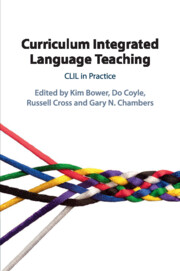Book contents
- Curriculum Integrated Language Teaching
- Curriculum Integrated Language Teaching
- Copyright page
- Contents
- Figures
- Tables
- Contributors
- Foreword
- Preface
- Acknowledgements
- Part I The Educational Context for CLIL
- Part II Current Aspects of Practice in CLIL
- Part III New Knowledge and Future Directions
- 8 Lessons to Be Learned
- 9 Supporting Peer Collaboration and Social Cohesion in Multilingual Classrooms
- 10 Exploring the Potential of a Pluriliteracies Approach
- Afterword
- Index
- References
9 - Supporting Peer Collaboration and Social Cohesion in Multilingual Classrooms
Practical Insights from Content-Based Learning Contexts
from Part III - New Knowledge and Future Directions
Published online by Cambridge University Press: 27 July 2020
- Curriculum Integrated Language Teaching
- Curriculum Integrated Language Teaching
- Copyright page
- Contents
- Figures
- Tables
- Contributors
- Foreword
- Preface
- Acknowledgements
- Part I The Educational Context for CLIL
- Part II Current Aspects of Practice in CLIL
- Part III New Knowledge and Future Directions
- 8 Lessons to Be Learned
- 9 Supporting Peer Collaboration and Social Cohesion in Multilingual Classrooms
- 10 Exploring the Potential of a Pluriliteracies Approach
- Afterword
- Index
- References
Summary
This chapter focuses on communication opportunities afforded by three different content-based education contexts: TWI, CLIL and education of the official school language as an additional language. This is a literature review guided by a conceptual and thematic analysis, whereby the themes focus on assumptions associated with learners and learning as well as communication opportunities. It concludes that peer collaboration in content-based learning offers social potential that may be relevant more generally in education and that specific elements of CLIL pedagogy, especially the Language Triptych, and translanguaging can play an important role in this.
Keywords
- Type
- Chapter
- Information
- Curriculum Integrated Language TeachingCLIL in Practice, pp. 165 - 186Publisher: Cambridge University PressPrint publication year: 2020
References
- 2
- Cited by



